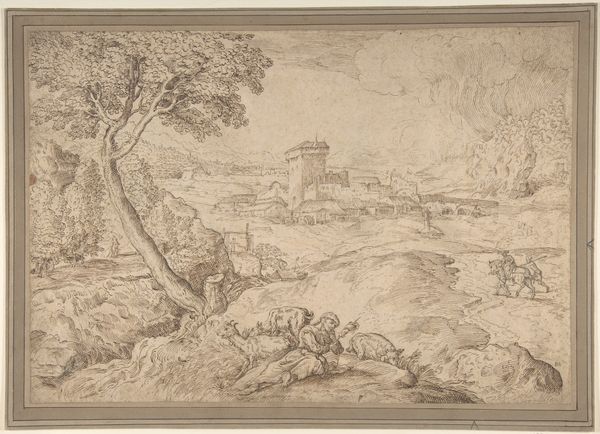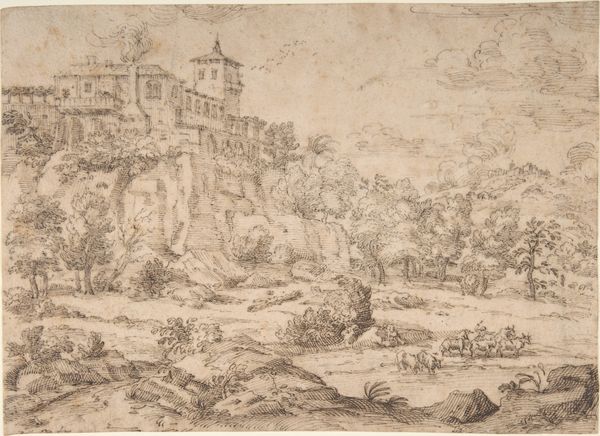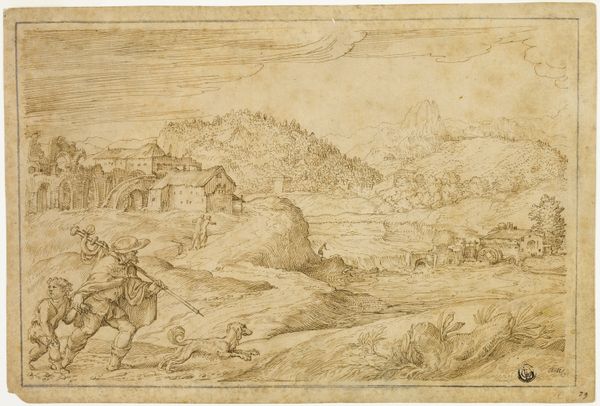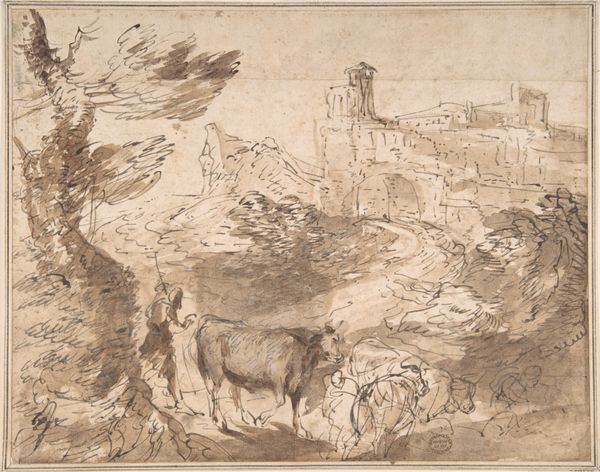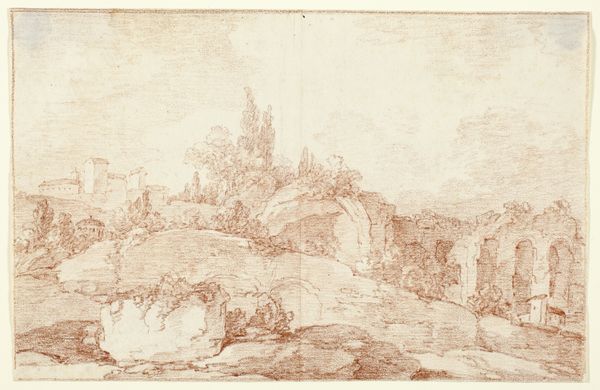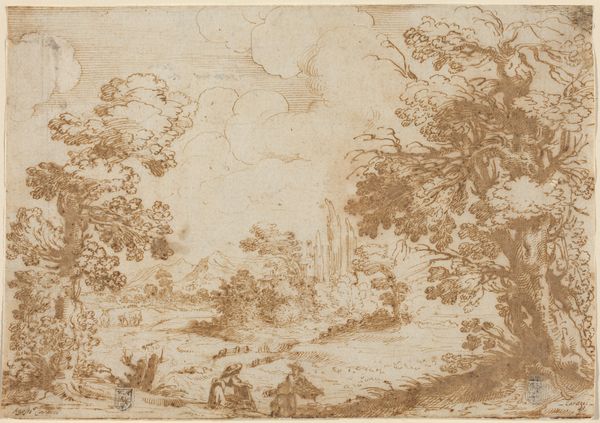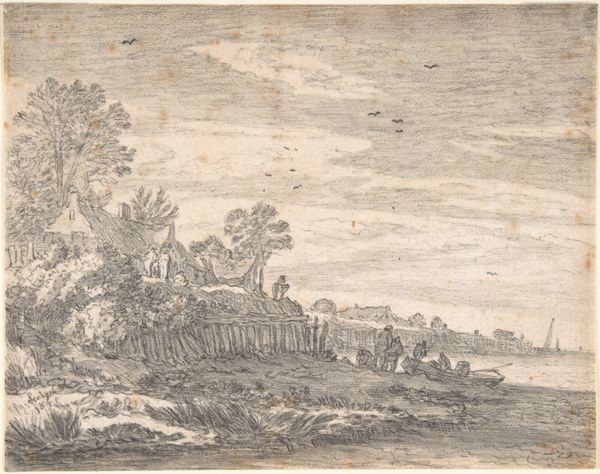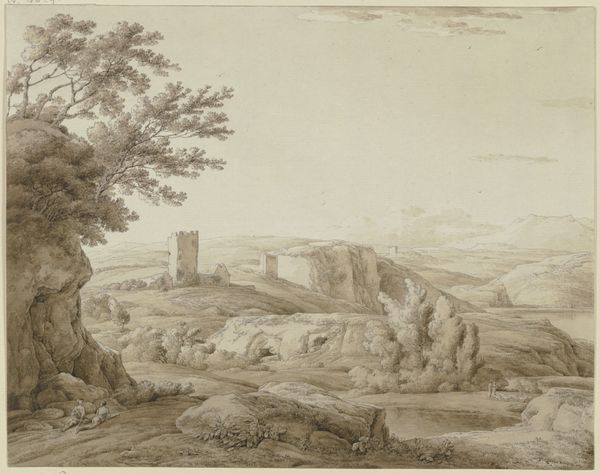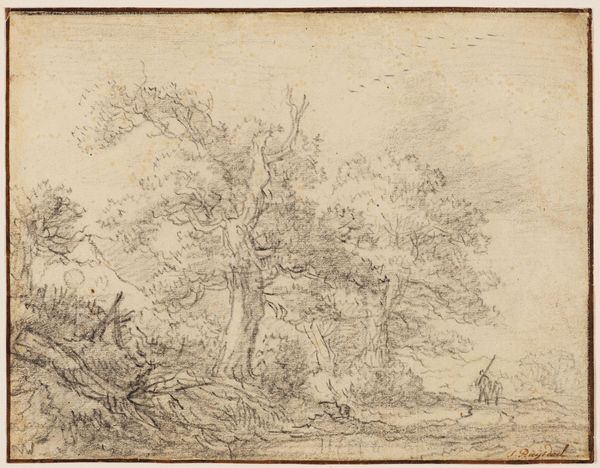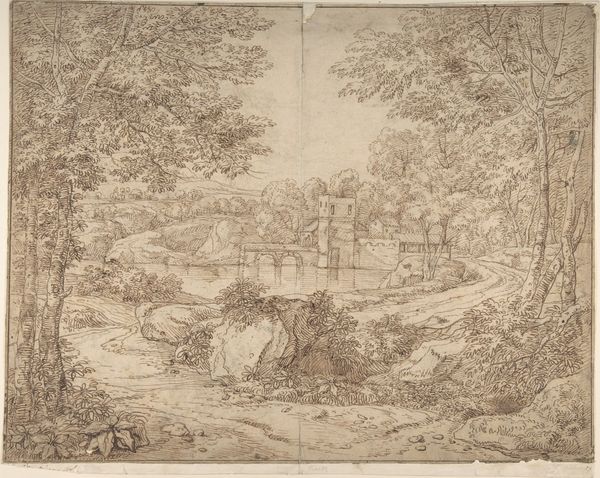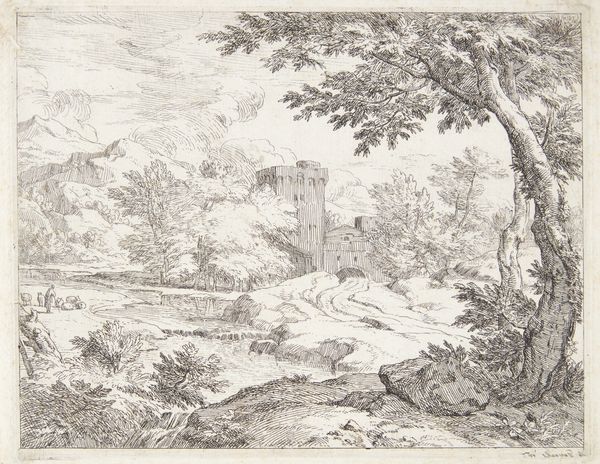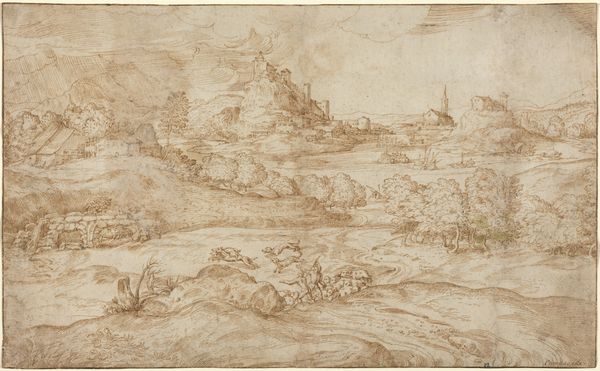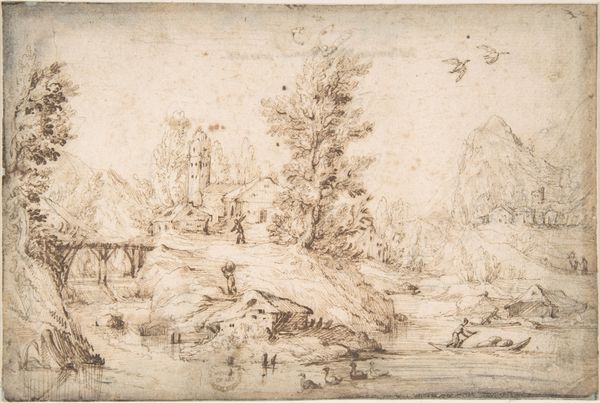
drawing, paper, ink
#
drawing
#
baroque
#
ink painting
#
landscape
#
paper
#
ink
Copyright: Public Domain
This drawing was made by Claude Lorrain, an artist who lived in the 17th century. He rendered this landscape with brown ink on paper. Observe the round tower, a dominant structure that pierces the horizon. Historically, towers were built for defense, but also served as symbols of power and vigilance. Like the Tower of Babel, it represents humankind's ambition, or the all-seeing watchtowers that dot Renaissance paintings. This motif echoes through time, recurring in various forms across different cultures. Think of the ziggurats of ancient Mesopotamia, or even the modern skyscrapers striving to reach the heavens, all resonating with our collective, perhaps subconscious, desire for control and understanding. The image, with its serene setting, invites a deep, almost primal response. The tower, secure and stoic, contrasts the open bay, and our senses are heightened. Lorrain has tapped into something primal within us, a shared memory of seeking shelter, observing the world, and finding both comfort and anxiety in the landscape around us.
Comments
stadelmuseum about 2 years ago
⋮
The same view appears on the front and back of a drawing at the École des Beaux-Arts in Paris (MRD 181r and v). The composition on the front of that drawing shows pines flanking the middle ground on the right and a group of travellers in the foreground, while the drawing on the back resembles this sheet in Frankfurt more closely. The drawing on the back of the sheet in Paris is a preliminary sketch in red chalk of the kind Claude must have often produced when he began to think about a composition. Only a few such studies have survived, however.Roethlisberger arranged the drawings in order: First Claude must have made the Paris drawing on the front, then the one on the back of the same sheet, and then finally the drawing in Frankfurt, which led to a 1638 composition depicting shepherds (LV 27, MRP 26). Roethlisberger later added to this group a drawing which shows the same view (Roethlisberger 1983, cat. 33), assuming that all four refer to a composition which was never executed. Some twenty years later, Brugerolles also noted the relationship between the Frankfurt sheet and the back of the Paris drawing, but pointed out that the front of the Paris drawing must have been produced later than the drawing on the back of the same sheet and the Frankfurt drawing (Brugerolles 2001, pp. 150-52). Moreover, she also confirmed convincingly the relationship to the painting. The drawings have a number of important details in common with the painting; the impressively fortified town is especially revealing, since it appears in the background in all four drawings.The faint lines subdividing the Frankfurt sheet diagonally, horizontally and vertically can be found in several of Claude's studies for compositions. Kitson surmised that - like the more usual squaring - they may have served to transfer his composition from one sheet to another or onto the final painting. Russell, on the other hand, believes that they had a compositional purpose. Brugerolles, too, emphasised the function of these lines as a sort of scaffolding, on which Claude was able to create the effect of depth and scaling, which is a characteristic feature of his paintings.
Join the conversation
Join millions of artists and users on Artera today and experience the ultimate creative platform.
